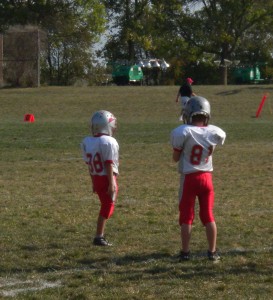 With apologies to the immortal Wang Chung, a few things have changed since those Dance Hall Days. Not that I’m naive enough to confuse the 1980s with the days of Jane Austen, but the world of teens has changed–both for better and for worse.
With apologies to the immortal Wang Chung, a few things have changed since those Dance Hall Days. Not that I’m naive enough to confuse the 1980s with the days of Jane Austen, but the world of teens has changed–both for better and for worse.
Let’s Dance. In my high school daughters’ world, homecoming dances are no longer primarily “date” activities. Even upperclassmen often go to the annual dance with a group of friends. These groups, usually including more girls than boys, gather beforehand for a pot-luck dinner at someone’s house (skipping the expense of the traditional dinner out) and for pictures as a herd instead of for portraits as pairs, and it seems the kids who are heading to the dance with dates are almost the exception rather than the rule.
Maybe that is a healthy change. Once upon a time, a couple breaking up probably meant at least one of the two stayed home from the dance. But my daughters and most of their friends are rejecting the two-by-two conditioning that used to be the norm in schools, opting instead for more independence–and, more importantly, for more efficacy. No need to put on their red shoes and dance the blues. They are already learning that their options in life are not dependent upon whether they have (or even want to have) a date, boyfriend, husband, etc. I also choose to believe that girls arriving and leaving as a group are likely to look out for one another. Anything that helps kids stay safe is an upgrade. Feel free to insert your own Safety Dance joke here–no hats required.
As I do from time to time, I questioned my 16 year old daughter’s choice in shoes: 5 inch heels. I reminded her that manufacturers would make more comfortable shoes for women if women refused to buy into the style of high-heels and pointed toes and insisted on comfortable designs. She agreed, but style outweighs comfort in her world. She also explained that as soon as they arrive at the  dance the girls check their shoes anyway. They may be voluntary victims of style, but these girls understand that dancing in heels is crazy. When it’s time to get Footloose, they get shoe-loose.
dance the girls check their shoes anyway. They may be voluntary victims of style, but these girls understand that dancing in heels is crazy. When it’s time to get Footloose, they get shoe-loose.
Dress code is another issue. After her first two months as a Catholic school student, my younger daughter came in from her freshman homecoming with word that the nuns had “shawled” girls whose dresses were too revealing. An overly self-revealing young lady would have two choices: add coverage with the shawl, or exit the event. As a dad and as an educator I thought this was a terrific idea. Being Pretty in Pink is a fine goal, but–regardless of whether the student or her parents share the school’s standards of decency–a dance is a school event and should not be confused with a club or bar. Dresses that are loose enough and that cover enough are a reasonable expectation in order for a young lady to have the privilege of attending the dance; and similar criteria must apply to young men. Dress codes are about R-E-S-P-E-C-T: for self, for others, and for setting. My older daughter’s public high school has a somewhat looser dress code, but she knows she still needs to meet her parents’ higher expectations. We give her free reign to buy whatever dress she wants–usually online–but with the caveat that we hol d the final say on whether she gets to leave the house wearing it once we see her in it; so far she has shown consistently good judgment, if anything leaning slightly more conservatively than we would have accepted. I want all of my kids to have clean, safe fun, as well as to understand that how someone dresses often affects how others treat him or her.
d the final say on whether she gets to leave the house wearing it once we see her in it; so far she has shown consistently good judgment, if anything leaning slightly more conservatively than we would have accepted. I want all of my kids to have clean, safe fun, as well as to understand that how someone dresses often affects how others treat him or her.
Dirty Dancing. Peer groups, shoes, and clothing are not nearly so contraversial, however, as the actual conduct at a dance. Much has been written over the last few years about the physical types of dancing teens are engaging in at school events. A quick search of Youtube or Google will reveal troubling videos of girls–someone’s daughters-bent forward, and boys–even a series of boys taking turns–grinding against them from behind. Many schools have instituted explicit “face to face and leave some space” policies to deter this.
Regardless of school policy, my guiding wisdom (or fascist directive, depending upon your point of view) for my kids remains the same as always: Don’t You Forget About Me. Assume I’m walking in. If you’re comfortable with me seeing what you and your friends are doing at the moment if I happen to walk in–and I just might–then all is well. Now, if only more parents would take a similar stance….As Corey Hart once told my generation, we can Never Surrender.






